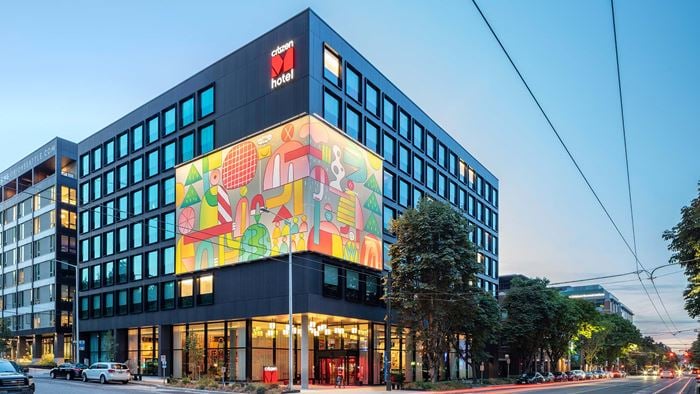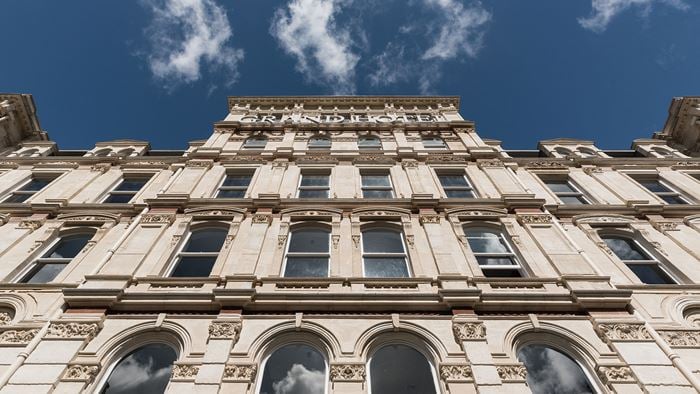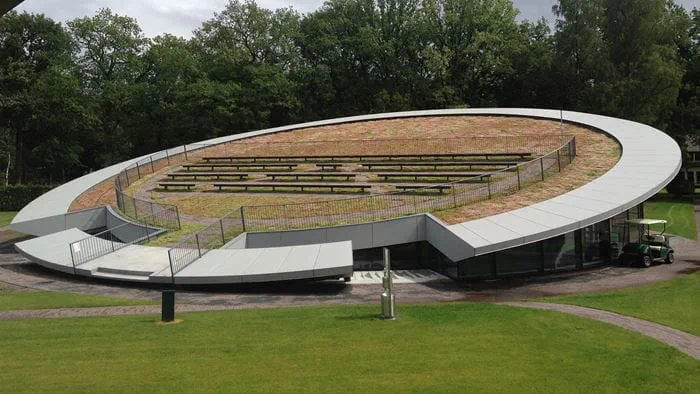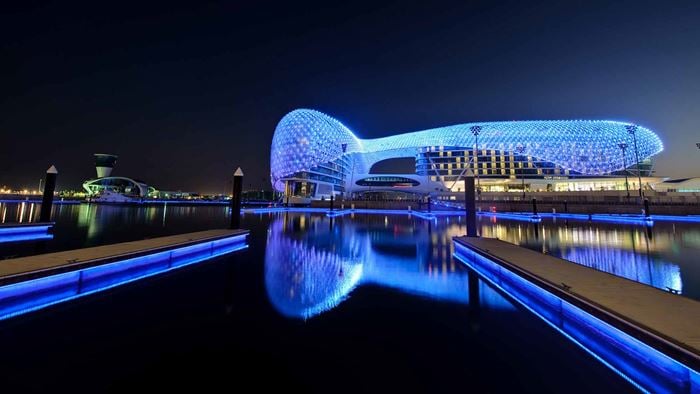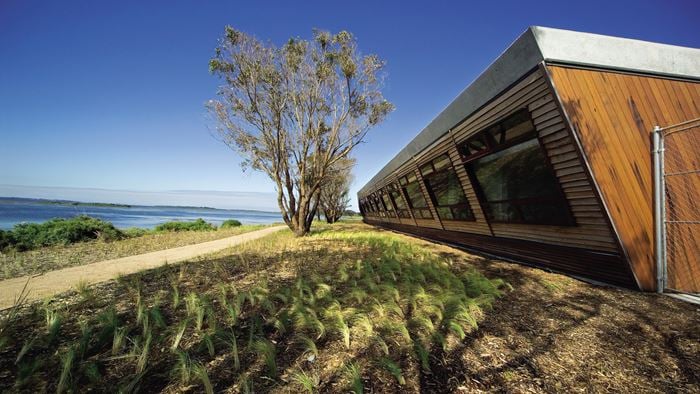ONOMICHI U2 was originally a 70-year-old warehouse called 'Uwaya No.2' located on the coast of Onomichi city of Japan's Hiroshima. Now, a themed complex has been creatively ‘installed’ within this warehouse, offering a hotel, restaurants and shops that target cyclists who often travel to this area. This project is the Gold Medal winner in Italy's International Prize for Sustainable Architecture 2015.
A house within a house
The new structure built within is detached from the warehouse’s original structure to avoid adding load to the existing structure. Such clearance between the two is only 300mm. We used lightweight steel frame to make the hotel block and it was assembled manually and fastened by bolts. The project was complete just within 5.5 months despite these technical challenges.
It’s worth noting that the changes we brought to the warehouse are ‘reversible’. Rather than adding a new concrete foundation, we placed the whole light steel frame structure (55kg/m²) upon non-shrink mortar levelling on the original floor.
As the warehouse’s original exterior can shield the new parts from wind and snow load, this in turn significantly lowers the construction cost to only $300/m².
Climate responsive design
A coastal city like Onomichi is especially famous for its year-round sea breeze and sunlight. To harness that, the roof opening and the warehouse’s access have been ‘reused’ to introduce natural lighting and ventilation, creating a microclimate in the complex that responds to the external environment. Besides, we limit the new radiant cooling and heating system to the functional areas only, leaving the main structure and the fair-faced concrete walls largely untouched so as to retain the building’s character.
Some of these old buildings may not be by the hands of famed architects or not seasoned enough to be declared as monuments, but they are indeed inseparable from their surroundings as well as the people who live there. Instead of demolishing them for ‘economic advancement’, this project perhaps epitomises how an old building can be revitalised economically through collaboration between authorities, property owners and designers – an exemplary case for creating a sustainable community.
 ;
;









